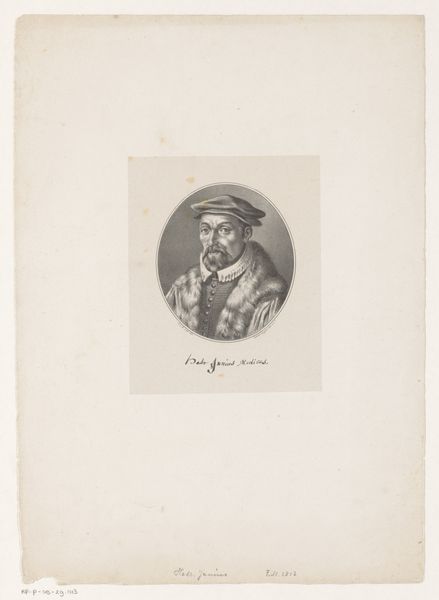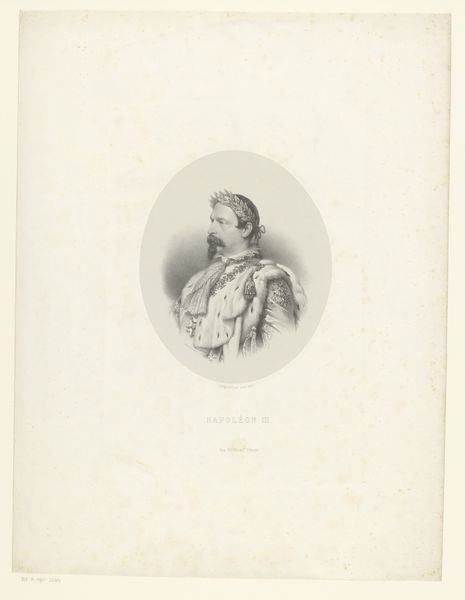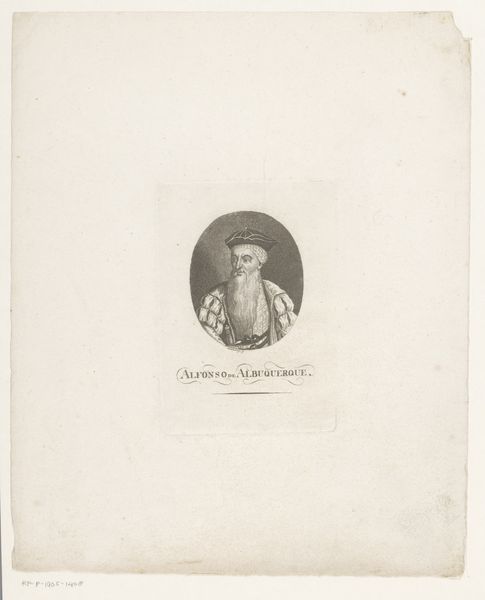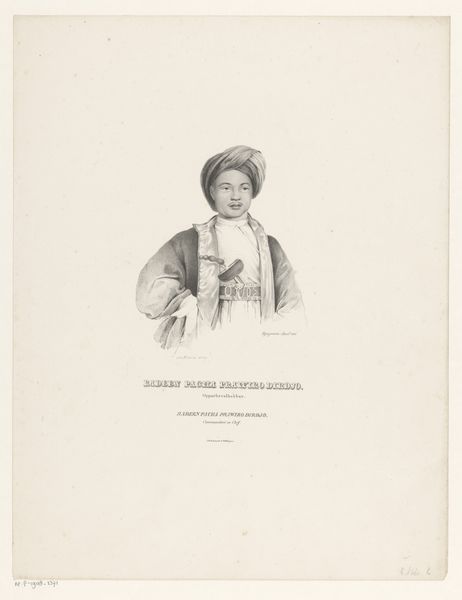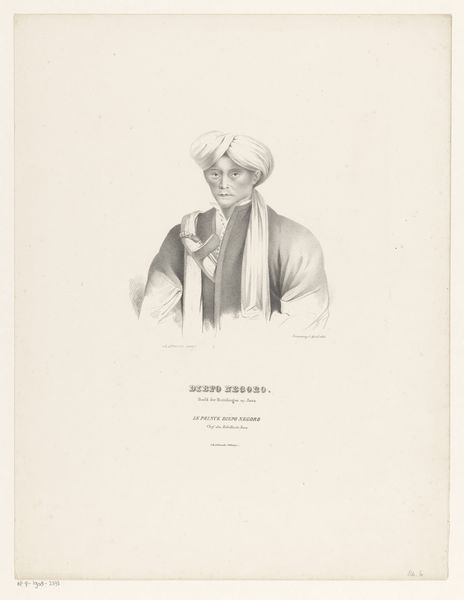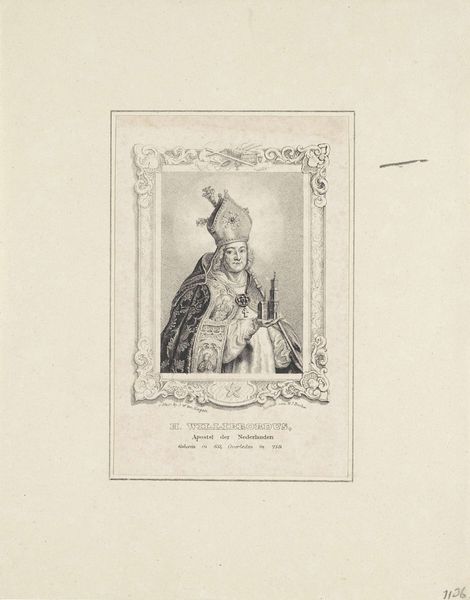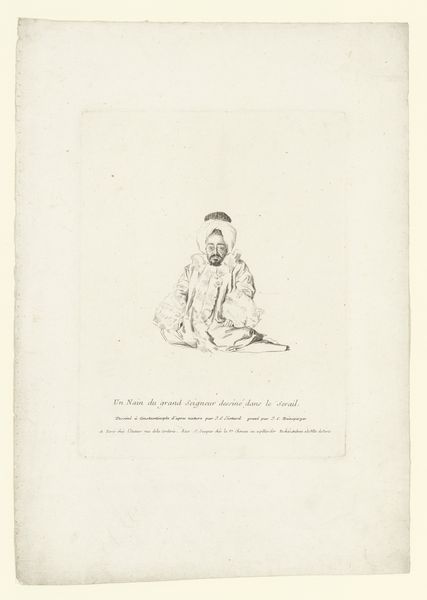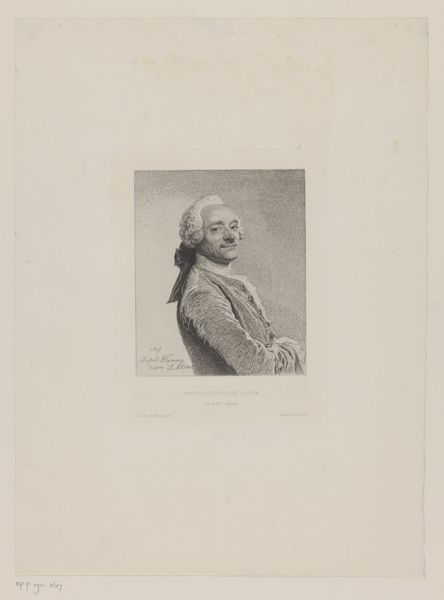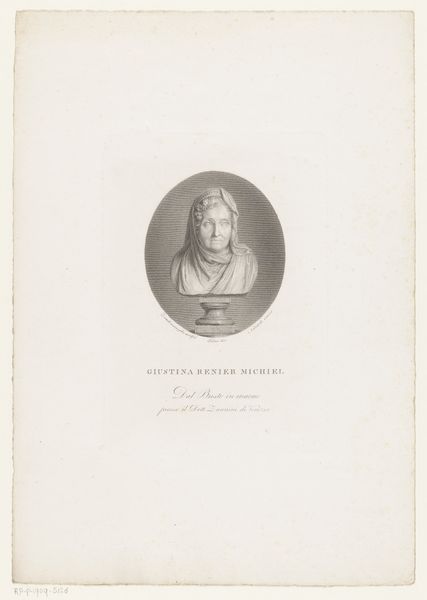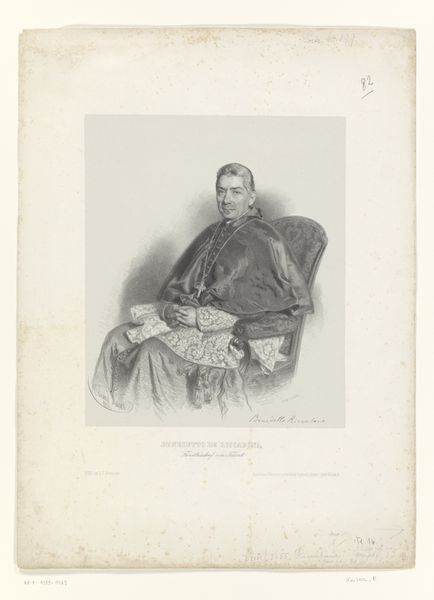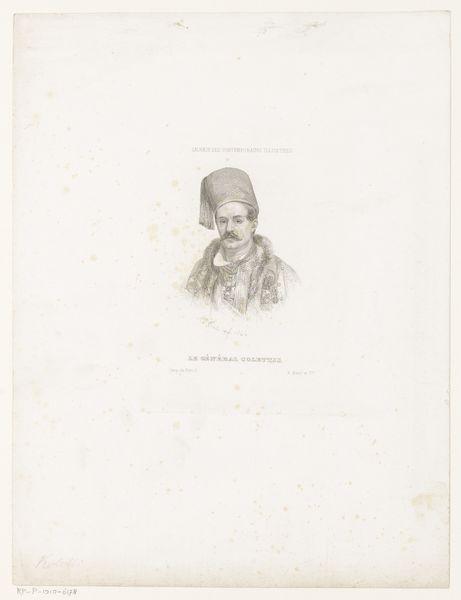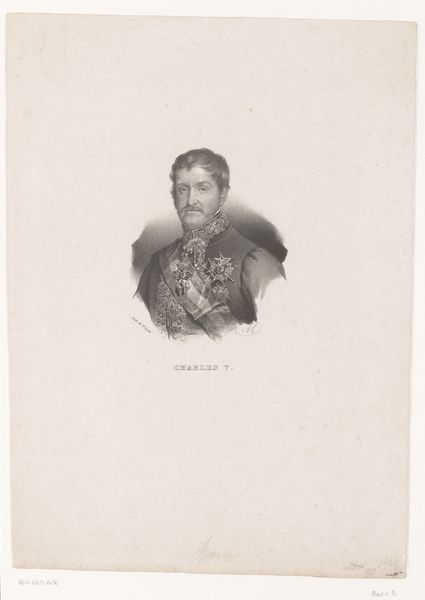
print, engraving
#
portrait
#
aged paper
# print
#
light coloured
#
old engraving style
#
personal sketchbook
#
romanticism
#
line
#
islamic-art
#
engraving
Dimensions: height 169 mm, width 109 mm
Copyright: Rijks Museum: Open Domain
This print of Sultan Mahmud II was created by Meno Haas, likely in the late 18th or early 19th century. It’s an engraving, a process where lines are incised into a metal plate, which is then inked and pressed onto paper. Consider the techniques, tools, and skilled traditions Haas would have engaged with. The engraver’s burin, a specialized cutting tool, demanded precision and control, a steady hand to translate the likeness of the Sultan. The choice of engraving, rather than another printmaking method like etching or lithography, speaks to a desire for crisp detail and tonal control, allowing for the intricate rendering of Mahmud’s features and attire. Prints like these served as a means of disseminating images widely, making the Sultan's likeness accessible across geographical and social boundaries. The labor and time involved in the engraving process, contrasts with the potential for mass production, embodying the tensions between craft and industry, artistic expression and political representation. Looking at this portrait, we can understand how materials, making, and context combine to give an artwork its full meaning.
Comments
No comments
Be the first to comment and join the conversation on the ultimate creative platform.
